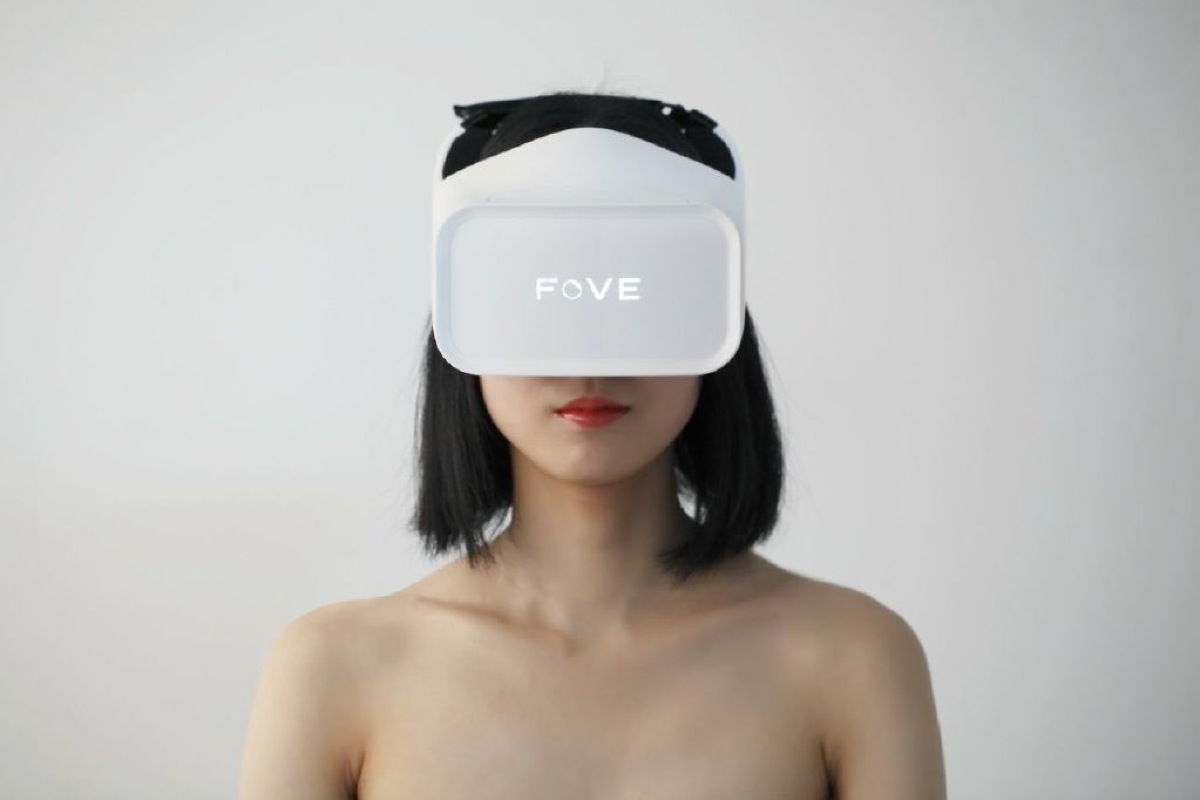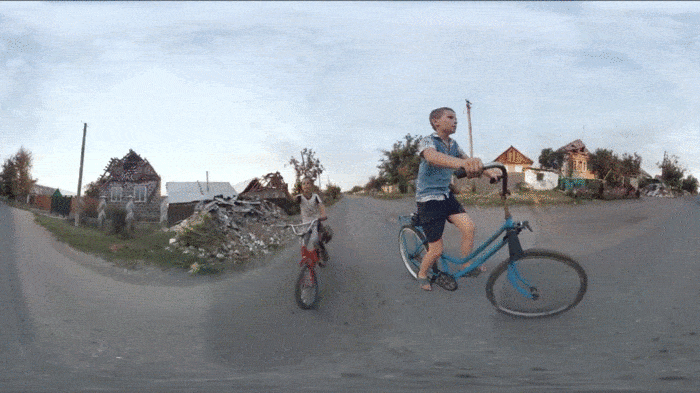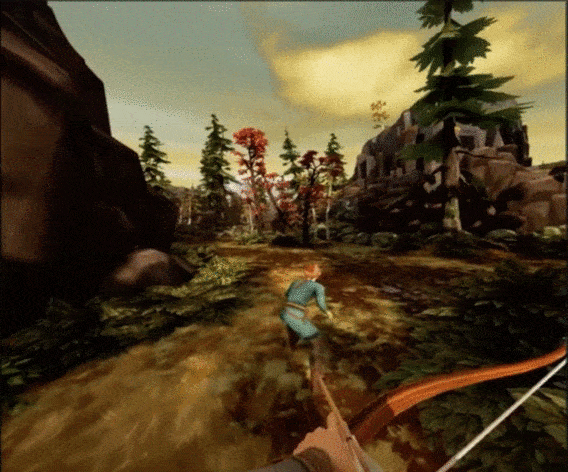
Photo credit: Fove.
“[…] You’ll be able to experience immersive virtual environments that create the feeling of ‘presence’ – like you’re actually there.” – Mark Zuckerberg, founder and CEO of Facebook.
The evolution of storytelling is inseparable from technology. From plays to radio to feature length films, technological advancements have helped storytellers close the gap between imagination and reality, luring audience members into a setting they’ve never been before.
Virtual reality seems like the natural next step. In VR, the audience is dropped right into the scene, as if they were part of the story. That’s what “presence” is – an Inception-like experience where the line between what’s real and imaginary is blurred. Presence is what makes virtual reality unique. However, it’s also the reason why VR is a terrible medium for telling stories.
The Swayze Effect

Henry, a short VR film by Oculus. Photo credit: Oculus Story Studio.
One of the core issues of VR storytelling is that it’s immersive but not interactive. If presence is about making the audience feel like they’re there, then audience participation is imperative. At the same time, the experience has to follow a storyline regardless of what the audience does. It’s a paradox that breaks presence and reduces audience members to spinning heads that have no influence over their environment, the characters, or the flow of the story.
Matt Burdette, the lead environment artist at Oculus Story Studio, calls this the “Swayze Effect”:
“The Swayze Effect […] describes the sensation of having no tangible relationship with your surroundings despite feeling present in the world. Much like the experiences and struggles of Sam Wheat, the protagonist in Ghost, the 1990 hit crime-romance film starring Patrick Swayze. Basically, it’s the feeling of yelling ‘I’m here! I’m here!’ when no one or nothing else around seems to acknowledge it,” he writes.
In Henry, a short VR film by Oculus Story Studio, for example, the audience watches Henry the hedgehog celebrate his birthday. Once in awhile, Henry makes eye contact with you and acknowledges your presence. But it feels weird because you’re mute. You can’t strike up a conversation with Henry and when the balloon animals flee out of his house, you can’t chase after them and see where they’ve gone. That would derail the story.
Though VR films leverage new technology, the audience’s role stays the same: stay passive and watch the story unfold. But if that’s the case, what’s the point in using virtual reality?
An experience, not a story
“You can never determine where your viewer is looking, so you have to create a 360-degree environment. You can use audio to beckon your viewer’s attention toward certain things. But again, your viewer has autonomy. You have to just let go of your subjective view, and think more about, What environment can I place them in that will engage them?” – Jenna Pirog, virtual reality editor at The New York Times.
VR might not be suitable for storytelling, but it’s a great tool for sharing experiences. The New York Times, for example, did a virtual reality project on child refugees called “The Displaced.” Paired with photographs and text, it shows VR video portraits of three refugee children in South Sudan, Ukraine, and Lebanon.
Instead of taking audience members from A to B along a distinct storyline, “The Displaced” grounds viewers in an environment, a moment in each child’s life. It’s an incredibly powerful experience.

A scene from ‘The Displaced’, by The New York Times.
Unlike stories which require careful curation and the stripping away of excess detail, an experience can be less structured and is well-suited to 360 degree footage. It’s the difference between communicating “This is what it’s like” versus “This is what happened.”
Interactive storytelling exists – it’s called gaming
All of this is not to say that interactive storytelling can’t exist in virtual reality. It can, but it won’t be called “cinematic VR” or “VR filmmaking.” It’s first-person gaming.

A scene from ‘FATED: The Silent Oath’.
Part of the rallying cry behind the VR hype is that it’s more than just gaming. And this is true – startups and companies all over the world are creating a wide variety of VR applications, from real estate tours to collaboration tools for engineers and architects.
But for filmmakers and video producers, virtual reality won’t be the next big thing. It won’t replace what’s already out there. It’ll be yet another medium – albeit a powerful one – that content creators can choose from.
This post VR will not be the new paradigm for storytelling. Here’s why. appeared first on Tech in Asia.
from Tech in Asia https://www.techinasia.com/virtual-reality-storytelling
via IFTTT
No comments:
Post a Comment